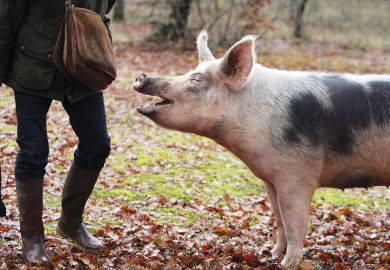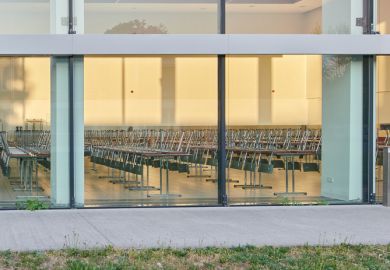Australia’s universities were better placed than ever to weather the Covid economic storm, sitting on estates that had gained some A$24.2 billion (£13.3 billion) in value on the eve of the pandemic.
Financial accounts released on 25 November reveal that at least seven universities – Melbourne, Queensland, Adelaide, Monash, RMIT, UNSW Sydney and Macquarie – had amassed reserves of more than A$1 billion each by the end of 2019.
Another three institutions – University of Technology Sydney, Western Sydney University and Griffith – were snapping at their heels with reserves of more than A$900 million each. Collectively, the sector increased its reserves by 57 per cent within a decade.
“Reserves” capture estimated changes in the market value of the universities’ land, buildings, artworks, library and other assets since they were bought or built. The rapidly increasing worth of university estates coincided with snowballing returns from their international education goldmine.
Revenue from overseas students’ fees almost tripled within a decade, from A$3.4 billion in 2009 to A$10 billion in 2019. The five universities with the highest income from international students – Sydney, Monash, Melbourne, UNSW and Queensland – collared 44 per cent of last year’s windfall.
Collectively, the sector earned over 27 per cent of its revenue from foreign students last year, up from less than 17 per cent a decade earlier.
Allocations from the federal government grew relatively sedately, from A$11.4 billion in 2009 to A$17.8 billion in 2019. The booming international earnings relegated Canberra to minority funder of the country’s university sector, for the first time, with 49 per cent of overall revenue coming from the Australian government – down from 56 per cent in 2009 and 52 per cent in 2018.
Even with funding from state and local governments included, just 50.7 per cent of universities’ earnings came from the public purse last year.
The soaring reserves and international education receipts could stoke anger over Covid-induced job-shedding at many of the richest institutions. Melbourne – Australia’s most cashed-up university, and boasting reserves of more than A$4.4 billion last year – this week revealed that voluntary redundancies had yielded only 209 of the 450 positions it has targeted for culling.
Bruising redundancy rounds are also underway at Monash, RMIT, UNSW and Macquarie. Monash invoked outrage around the world by forcing the abolition of widely respected musicology and theatre programmes as part of its so-called voluntary redundancy scheme.
RMIT announced in September that it planned to cut 250 jobs on top of 355 already vacated through voluntary means. UNSW’s voluntary redundancy round netted less than half of the almost 500 jobs it says must go, while Macquarie is yet to disclose how many positions it plans to jettison.
The financial accounts cover Australia’s 37 public universities as well as Notre Dame Australia, a private Catholic university, and Batchelor Institute of Indigenous Tertiary Education in the Northern Territory.
The accounts show that employee costs have declined marginally as a share of university expenses, from 58 per cent in 2009 to 56 per cent a decade later. But while academic salaries also declined as a proportion of employee costs, the share going to non-academic salaries was unchanged.
Register to continue
Why register?
- Registration is free and only takes a moment
- Once registered, you can read 3 articles a month
- Sign up for our newsletter
Subscribe
Or subscribe for unlimited access to:
- Unlimited access to news, views, insights & reviews
- Digital editions
- Digital access to THE’s university and college rankings analysis
Already registered or a current subscriber? Login










